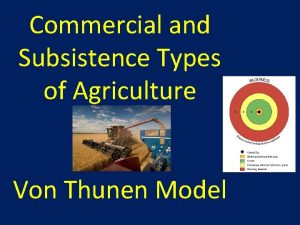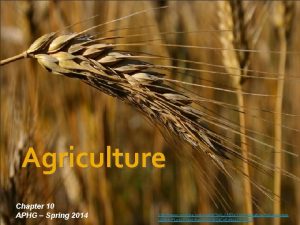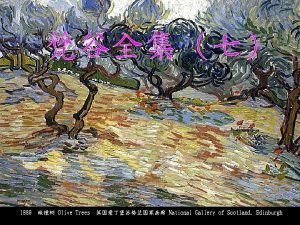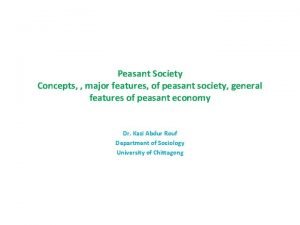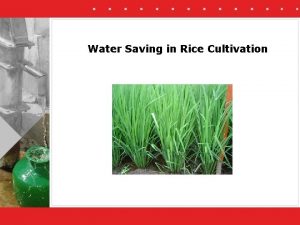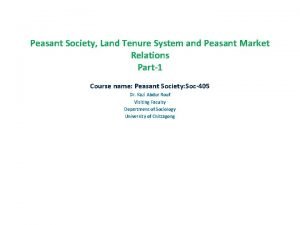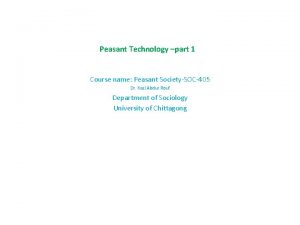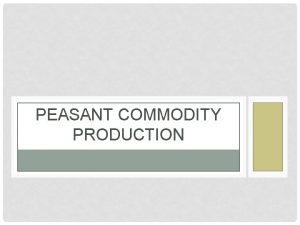Intensive Peasant Agriculture Wet Rice Cultivation In S











- Slides: 11

Intensive Peasant Agriculture Wet Rice Cultivation In S. E. Asia

Wet Rice Cultivation Wet rice requires a short growing season (100 days) Temps must be over 20 Degrees C Requires impervious subsoil to retain water. Rice is sown in flooded fields In many places irrigation allows 2 or three crops a year Rice is grown in small fields (padi) or Sawahs Fields must be flat so terraces are often used

Climate Monsoon climate with high temps all year Rainfall is variable so irrigation is required

Flooded padis Flat land Terraces bunds Farmers transplanting seedlings

Walls are prepared around fields (bunds) Seeds sown in nursery beds Padi fields flooded and land hoed by hand or harrowed by water buffalo Seedlings transplanted by hand

Seedlings must be correct distance apart for maximum yield Water level must be kept at correct level so plants are not submerged When rice matures fields are allowed to dry out.

Nutrients and organic debris Soil Fertility Human waste Cropping Nutrient uptake by crop Decay of last crop Weathering of parent material releases nutrients Negligible leaching

The Green Revolution

The Green Revolution Application of Western style farming techniques Hybrid crop variety (IR 8 rice in Philippines x 6 in first harvest) Yields increased 3 – 4 times Shortened growing season New technology Land consolidation

Success Yields increased Wheat and maize broadened diet Higher standard of living New industries created Irrigation increased

Failures New seeds need fertilisers, extra irrigation and pesticides Poor farmers have become poorer Farmers have to borrow money High costs of fuel Unemployment Unpalatable crops
 Intensive rice cultivation
Intensive rice cultivation Where is intensive subsistence wet rice dominant practiced
Where is intensive subsistence wet rice dominant practiced Wet wet wet
Wet wet wet Grain farming ap human geography
Grain farming ap human geography Intensive subsistence agriculture aphg
Intensive subsistence agriculture aphg Rich tudor fashion
Rich tudor fashion Louis braille biography
Louis braille biography Clergy and nobles
Clergy and nobles Peasant woman binding sheaves
Peasant woman binding sheaves Features of peasant society
Features of peasant society Utah ddw
Utah ddw Spittled mirth meaning
Spittled mirth meaning

